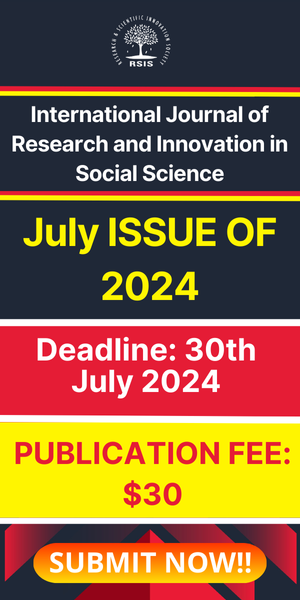Spatio-Temporal Geomorphic Landscape Dynamics and Possible Geological Hazards in Ghana
- December 25, 2021
- Posted by: RSIS
- Categories: Geography, IJRISS
International Journal of Research and Innovation in Social Science (IJRISS) | Volume V, Issue XII, December 2021 | ISSN 2454–6186
Spatio-Temporal Geomorphic Landscape Dynamics and Possible Geological Hazards in Ghana
Ezekiel Addison Otoo1*, Yaw Asamoah (PhD)1, George Boateng2 & Ishmael Yaw Dadson (PhD)1
1Department of Geography Education, University of Education, Winneba, Ghana
2Berekum College of Education, Berekum – Ghana
*Correspondence
Abstract: The recent deteriorating nature of the Mile 11 hills has made the area a potential geo-hazard zone given the extent of human activities and the level of excavations on-going. The study sought to investigate the extent of landscape change and possible geological hazards between 1986 and 2016. It adopted the exploratory sequential design and the mixed research methodology. The study used spatial cartographic tools (GIS and Remote Sensing) to examine the extent of landscape change as well as interviewed 32 participants (residents and experts) for the qualitative analysis through the purposive sampling method. The results confirmed the landscape was undergoing both degradation and depositional geomorphic changes. About 56.11% of the landscape underwent degradation while 43.89% underwent deposition. Geomorphic change in the municipality was largely due to anthropogenic change rather than geological changes which were evidence by the activities of urbanisation, sand winning and quarrying on-going in the area, posing potential geo-hazard risk to residents in the area. The major factors found to be responsible for landscape change included geological, meteorological, and anthropogenic factors. Possible geological hazards envisaged included earth quake, landscape influenced flooding and mudflow. It was recommended that hazard prone areas should also be zoned and residents relocated to prevent future fatalities. Proper coordination was also recommended between traditional land owners, EPA, GGSA and GSMA to enhance proper planning in the municipality.
Keywords: Spatio-temporal, Geomorphic landscape, geological hazards, GIS, Remote sensing.
I. INTRODUCTION
Landscape structure and composition develops continuously in space and time. These developments are attributable to the complex interaction between the natural environment and human activities, resulting in the change of the stability of individual elements in the landscape system and the spatial structure of the landscape (Xiao et al., 1990).


